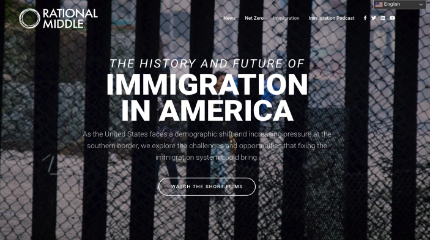STRATEGIC INITIATIVES:
Immigration
The Center focuses on the long-term economic importance of immigrants and immigration and their significant contributions to the region’s success.
2021 Report Update
This update to our 2019 report demonstrated how the recent two-year decrease in the region’s immigration rates depressed future economic growth, confirming that economic growth is critically dependent on continued immigration.
Our research found:
- Projecting GDP for 2040, a restricted immigration scenario (30 percent less immigration) causes a $47 billion economic loss and an increased immigration scenario (30 percent more immigration) produces a $62 billion economic gain from the status quo.
- Immigrants already make up nearly one-third of the region’s workforce.
With employment growth among native citizens below 2 percent, Houston will need foreign immigration to continue expanding economically.
- Growth in immigration rates slightly declined over the past couple of years: From 2007 to 2016, an average of 25,000 immigrants filled new jobs in Greater Houston annually. This figure dropped to an annual average of 16,000 for the 2016 to 2019 period.
- The decline in immigration rates depressed the projected economic benefits for the region from immigration: while our 2019 report indicated a $67 billion GDP benefit under the increased immigration scenario, this figure dropped by 7 percent to $62 billion when the Center ran the model in 2021.
- Between 2019 and 2040, two in every five jobs added within the region will be filled by foreign-born workers.
The report provides updates to the report’s snapshot of the area’s immigrant population and provides sector-specific analyses for the role immigration will play in the Professional Services, Manufacturing, Energy and Information industries through 2040.


